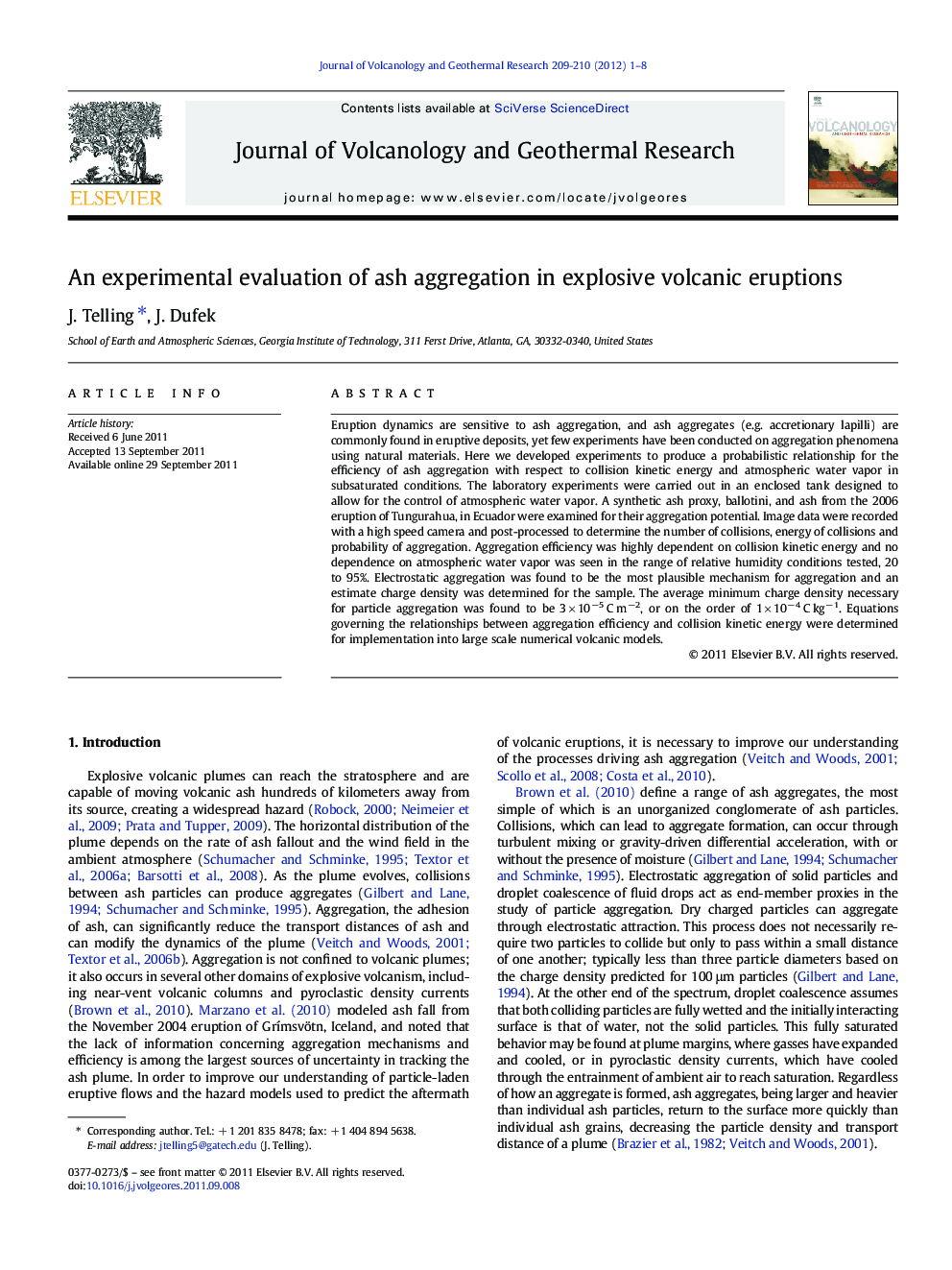| Article ID | Journal | Published Year | Pages | File Type |
|---|---|---|---|---|
| 4713520 | Journal of Volcanology and Geothermal Research | 2012 | 8 Pages |
Eruption dynamics are sensitive to ash aggregation, and ash aggregates (e.g. accretionary lapilli) are commonly found in eruptive deposits, yet few experiments have been conducted on aggregation phenomena using natural materials. Here we developed experiments to produce a probabilistic relationship for the efficiency of ash aggregation with respect to collision kinetic energy and atmospheric water vapor in subsaturated conditions. The laboratory experiments were carried out in an enclosed tank designed to allow for the control of atmospheric water vapor. A synthetic ash proxy, ballotini, and ash from the 2006 eruption of Tungurahua, in Ecuador were examined for their aggregation potential. Image data were recorded with a high speed camera and post-processed to determine the number of collisions, energy of collisions and probability of aggregation. Aggregation efficiency was highly dependent on collision kinetic energy and no dependence on atmospheric water vapor was seen in the range of relative humidity conditions tested, 20 to 95%. Electrostatic aggregation was found to be the most plausible mechanism for aggregation and an estimate charge density was determined for the sample. The average minimum charge density necessary for particle aggregation was found to be 3 × 10−5 C m−2, or on the order of 1 × 10−4 C kg−1. Equations governing the relationships between aggregation efficiency and collision kinetic energy were determined for implementation into large scale numerical volcanic models.
► Aggregation efficiency showed little correlation with relative humidity. ► Aggregation efficiency increased as collision kinetic energy decreased. ► Sub-saturated aggregation is driven primarily by electrostatic forces.
